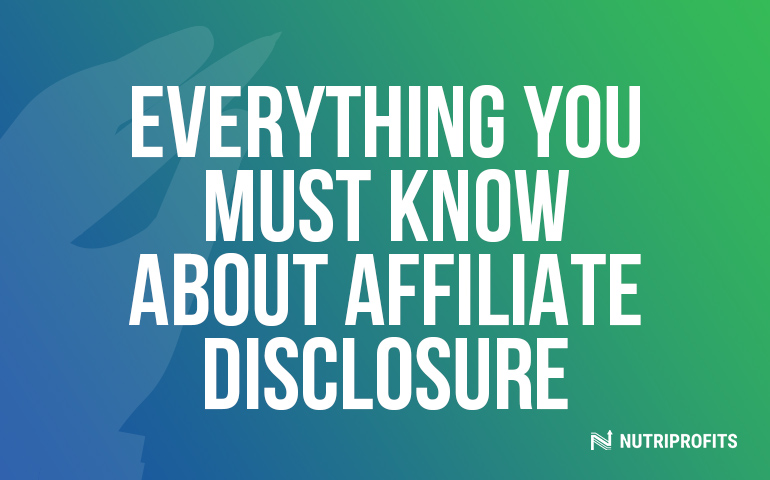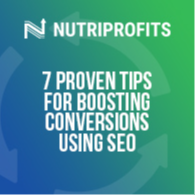When buying a product or service, it’s nice for consumers to know what they’re getting into. After all, the most crucial thing for an affiliate marketer is building their trust with their audience. So, when sharing affiliate links, the marketer must be as honest as possible with their consumers. That means admitting the marketer’s relationship with a brand or product.
If the affiliate marketer isn’t honest with their audience, then not only will they lose their consumers’ trust, but they might also get into legal trouble. To ensure a consumer’s understanding of what they’re buying or supporting, here’s everything to know about affiliate disclosure.
Basic Information About Affiliate Disclosure
In this section, the affiliate marketer will learn the basics of an affiliate disclosure.
What Is It?
For those who don’t know what an affiliate disclosure is, it’s a disclaimer informing consumers that the affiliate marketer is getting compensated from endorsing a brand or product.
When a consumer visits the marketer’s website, there will be affiliate links there. If the consumer buys anything from an affiliate link, the marketer will earn a percentage of a product owner’s fee.
There are many kinds of affiliate disclosures. For example, some websites will call the affiliate marketer an associate, while other websites will state that a page contains affiliate links.
Who Controls It and Establishes the Rules?
The Federal Trade Commission (FTC) controls affiliate disclosures and establishes the rules about them. The FTC’s guidelines are extensive, but they don’t provide clear instructions for compliance. That’s why every compliance obligation needs a case-by-case analysis.
The FTC pays attention to every online ad, sponsored content, and affiliate marketing place despite their lack of agents.
Is It Mandatory?
Since 2009, the FTC has made displaying a disclosure on every page with affiliate links mandatory. These guidelines apply to all forms of media, which include emails and videos.
However, many websites don’t display disclaimers. Even the ones that do only display them in their affiliate disclosures and not on every page.
Even if it wasn’t mandatory, it would still be wise for the affiliate marketer to display an affiliate disclosure on every page.
Reasons for Affiliate Disclosure
Besides being mandatory, there are plenty of reasons why the affiliate marketer should place a disclosure on their websites and in their content.
For starters, displaying an affiliate disclosure builds trust between the affiliate marketer and their consumers. Honesty is one of the most crucial things for building relationships and earning repeat customers. Failing to inform consumers about receiving compensation from a brand can damage the marketer’s trust and business.
Another reason for displaying an affiliate disclosure is that many affiliate programs and platforms need them. Even without the FTC, platforms like Facebook and Amazon will check to see if the affiliate marketer has displayed a disclosure.
Failure to display one shut down or ban the affiliate marketer’s accounts. The marketer can also be removed from certain affiliate programs if they don’t display proper affiliate disclosure statements.
The biggest reason for having an affiliate disclosure is that lacking one can lead to legal trouble. If the affiliate marketer doesn’t have a disclosure, the FTC may fine them. From big businesses to small affiliate marketers, anyone can report the lack of a proper affiliate disclosure to the FTC.
If the affiliate marketer does not display an affiliate disclosure, both they and the company they’re collaborating with can face liability and punishment like prohibiting engagement in affiliate marketing.
Where It Should Be Used
As stated before, the FTC requires all forms of media to display an affiliate disclosure. Yes, this includes emails and videos. So, where exactly should the affiliate marketer place their disclosure? Should it only be for social media or websites? Here’s where the marketer can display their disclosures.
For emails, it’s best for the affiliate marketer to display their disclosure before their affiliate link. As for videos, the marketer will have to put the disclosure in three places: the description, the audio, and the video content.
Social media websites are easier to display disclosures because the affiliate marketer can write a description above or beside their post. Still, some social media websites can still be tricky.
For example, Twitter only allows 240 characters per tweet. So, to follow the FTC guidelines, the affiliate marketer should put the following hashtags before their tweet:
#Ad #Affiliate Link #Influencer #SponsoredAd
The affiliate marketer should also display those same hashtags for their posts on websites like Instagram, TikTok, and Pinterest.
How to Write an Affiliate Disclaimer?
Now that the affiliate marketer knows the basics of an affiliate disclosure, it’s time to learn how to write one. The affiliate marketer can’t write one in any old way, so here are some tips for writing a proper affiliate disclosure.
Advice One: Always Be Clear and Direct
As stated before, honesty is one of the most crucial ways of building trust with consumers. That’s why affiliate disclosures should be simple and to the point.
Consumers may not know what an affiliate link is, so avoid using fancy and complex industry jargon. All the affiliate marketer should say is that they’re receiving compensation due to promoting and selling a product.
Advice Two: Place Affiliate Disclosures Prominently and Accessibly
In an email, the affiliate marketer should place their disclosure before the affiliate link. That way, the consumer will see that the marketer is collaborating with an affiliate company. The same thing can be said for social media posts and websites.
Ideally, the affiliate marketer should place their disclosure at the top of their page. That way, consumers will immediately see and know what they’re getting into. Always avoid placing the disclosure in a footer or an “About Me” section. The FTC also warns against placing disclosures behind vague hyperlinks like “Terms of Service” or “Disclaimer.”
The closer a disclosure is to a “triggering post” (like an affiliate link or product recommendation), the better. Affiliate disclosures should be displayed on all pages with affiliate links.
Formatting is as important as where the affiliate marketer places their disclosure. More people use mobile devices for browsing, so it’s essential for affiliate disclosures to be visible on every device possible.
Advice Three: Add Relevant Hashtags on Posts
Hashtags are essential for getting noticed on any website, especially social media websites. They’re excellent for gaining followers and eventual consumers, and they’re amazing for getting someone to notice and buy something.
However, using irrelevant hashtags can damage the affiliate marketer’s brand and make them lose money. That’s why it’s vital for the marketer to only use relevant hashtags.
As stated before, it’s best to put these hashtags before a post:
#Ad #Affiliate Link #Influencer #SponsoredAd
Despite their strict guidelines, the FTC is quite lenient on what words and hashtags are acceptable as long as the affiliate marketer clearly states that they’re being compensated for their post. However, the marketer can’t use abbreviated versions of hashtags like #spon and #collab as disclosures.
Adding more on the first piece of advice, the affiliate marketer should avoid only using #affiliate because consumers may not know what that means. Instead, the marketer should use these hashtags:
#Ad #PaidAd #Promotion #Sponsored
The FTC isn’t too picky on where the affiliate marketer places these hashtags, but it advises the marketer not to place them in a sea of other hashtags.
Conclusion
Honesty is a surefire way of building trust with consumers, and an affiliate disclosure is a surefire way of being honest with consumers and the FTC. That’s why it’s essential to learn the basics of affiliate disclosures and how to properly write one.





.jpg)

-1-1.jpg)